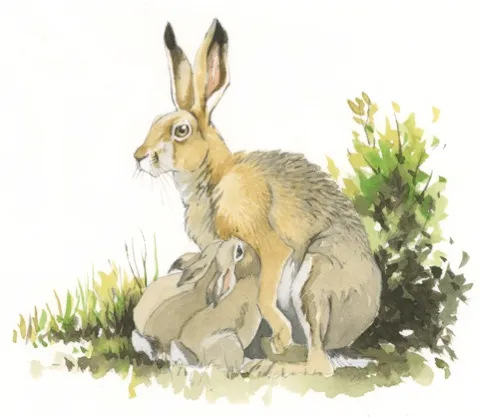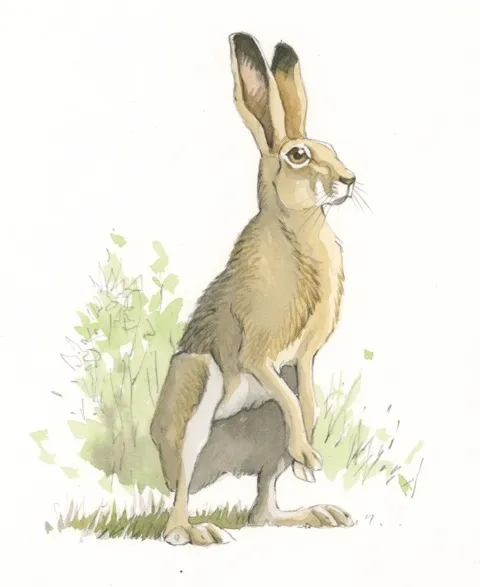Discover all you need to know about the family life of the brown hare. Boxing is not the only interesting brown hare behaviour – their family life is also fascinating.
Females produce three litters of up to four young (usually two or three) between February and October, but April is the best time to go hare watching because there are plenty of leverets around, the evenings are getting longer and the vegetation is still short enough to allow you to see the action.
Open arable fields are prime brown hare habitat and good places to look for them.
Watch for mother
For the first weeks of their lives, leverets spend the day lying motionless in the open and are extremely hard to spot.
The best way to see them is to locate their mother: position yourself on a vantage point as evening approaches and wait for her to appear.

Ever alert, the female hare will allow her younsters to feed for just a few minutes. © Federico GemmaGathering leverets
Female hares only suckle their leverets once a day for about five weeks.
Soon after sunset, the leverets will gather where they were born, often playing for a few minutes in the gathering dusk.
They then settle down, generally sitting still and occasionally grooming.

A mother hare will approach her leverets with extreme caution, pausing regularly to check for danger. © Federico Gemma
Maternal caution
The female arrives slowly. If there are other hares around, she’ll be the nonchalant one standing on her hind legs to scan for danger.
When she gets near, the young rush to her and suck briefly before she moves off and they disperse.
Risk avoidance
That is hare family life: a brief but intriguing insight into how they minimise the risks posed by predators.
FIVE HARE HOTSPOTS
Norfolk Across the county on farmland, grazing marshes and heathland.
Loch Gruinart RSPB reserve, Islay In fact, brown hares can be seen all over Islay.
Lower Fair Snape, Forest of Bowland Good numbers throughout Bowland, but this area is especially rewarding.
King’s Forest, Suffolk Managed by the Forestry Commission, this area is a patchwork of heathland and forest.
Willow tree fen, Lincolnshire Arable land that is being returned to wet fenland landscape.
Find out more about the work of illustrator Federico Gemma.